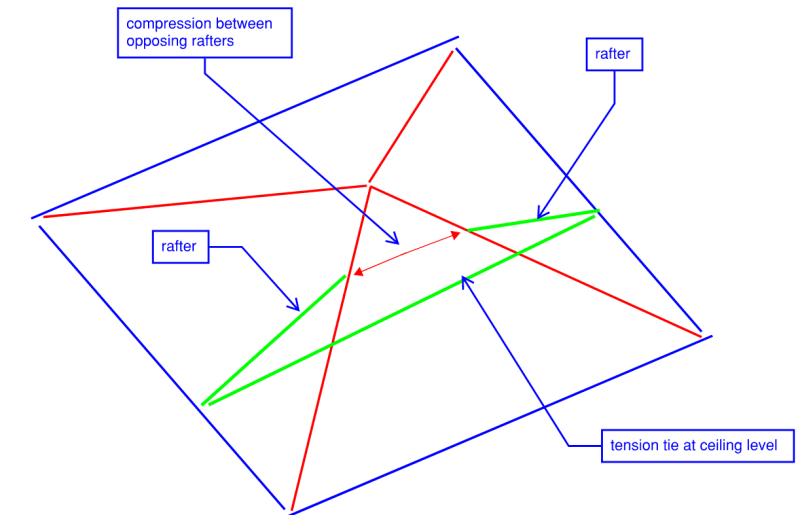TRAK.Structural
Structural
I've been asked about an open pavilion type structure with a hip roof (see attached inspiration image). I'm trying to sus out how these are typically framed. It's high end residential construction, likely 20 feet x 20 feet in plan, and stick framed with conventional sawn lumber and/or engineered wood products as needed. It will have a flat ceiling so my thought is that this works similar to a typical rafter/ceiling joist system however there are some differences that I haven't quite wrapped my head around yet:
1. Ceiling joists that have the bottom flush with the ceiling can really only run in one direction; to resolve the outward rafter thrust in the other direction should another layer of ceiling joists be run right on top of the aforementioned joists?
2. If the structure is a square in plan and the roof framing meets at a common peak, do the hip members need to be designed as beams spanning from the corners to the peak?
3. Does anyone have any guidance on detailing at the central peak? Getting (4) hips cut so they all meet just right seems like it may be tough, but I'm not sure that some sort of compression ring for the hips to frame in to would be any better.
1. Ceiling joists that have the bottom flush with the ceiling can really only run in one direction; to resolve the outward rafter thrust in the other direction should another layer of ceiling joists be run right on top of the aforementioned joists?
2. If the structure is a square in plan and the roof framing meets at a common peak, do the hip members need to be designed as beams spanning from the corners to the peak?
3. Does anyone have any guidance on detailing at the central peak? Getting (4) hips cut so they all meet just right seems like it may be tough, but I'm not sure that some sort of compression ring for the hips to frame in to would be any better.


